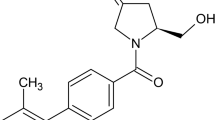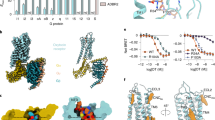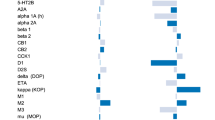Abstract
SINCE the original synthesis of oxytocin1, the principal uterine contracting and milk ejecting hormone of the posterior pituitary gland, more than 200 analogues have been synthesized in a number of laboratories and the structure–function relationships of the parent hormone have been elucidated pharmacologically2. We now wish to report the synthesis and properties of 4-threonine-oxytocin, an analogue of oxytocin in which the glutamine residue in the four position is replaced by a threonine residue. This analogue has strikingly greater activities in the isolated rat uterus and fowl vasodepressor assays than oxytocin itself, and possesses specifically weaker vasopressor and antidiuretic activities than oxytocin. We believe that study of this analogue may help (a) in elucidating the nature of hormone-receptor interactions, (b) from the standpoint of the phylogeny of the neuro-hypophysial hormones, and (c) in clinical use.
This is a preview of subscription content, access via your institution
Access options
Subscribe to this journal
Receive 51 print issues and online access
$199.00 per year
only $3.90 per issue
Buy this article
- Purchase on Springer Link
- Instant access to full article PDF
Prices may be subject to local taxes which are calculated during checkout
Similar content being viewed by others
References
du Vigneaud, V., Ressler, C., Swan, J. M., Roberts, C. W., Katsoyannis, P. G., and Gordon, S., J. Amer. Chem. Soc., 75, 4879 (1953).
Berde, B., and Boissonnas, R. A., in Neurohypophysial Hormones and Similar Polypeptides (edit. by Berde, B.), 802 (Springer-Verlag, Berlin, 1968).
Merrifleld, R. B., J. Amer. Chem. Soc., 85, 2149 (1963).
Manning, M., J. Amer. Chem. Soc., 90, 1348 (1968).
Baxter, J. W. M., Manning, M., and Sawyer, W. H., Biochemistry, 8, 3592 (1969).
Manning, M., Wuu, T. C., and Baxter, J. W. M., J. Chromatog., 38, 396 (1968).
Sawyer, W. H., in The Pituitary Gland (edit. by Harris, G. W., and Donovan, B. T.), 3, 288 (Butterworth, London, 1966).
Flouret, G., and du Vigneaud, V., J. Med. Chem., 12, 1036 (1969).
Katsoyannis, P. G., and du Vigneaud, V., J. Biol. Chem., 233, 1352 (1958).
Berde, B., and Konzett, H., Med. Exp., 2, 317 (1960).
Geschwind, I. L., Colloques Internationaux du Centre National de la Recherche Scientifique, No. 177, 385 (1969).
Sawyer, W. H., Wuu, T. C., Baxter, J. W. M., and Manning, M., Endocriology, 85, 385 (1969).
Hope, D. B., Murti, V. V. S., and du Vigneaud, V., J. Biol. Chem., 237, 1563 (1962).
Author information
Authors and Affiliations
Rights and permissions
About this article
Cite this article
MANNING, M., SAWYER, W. 4-Threonine-Oxytocin: A More Active and Specific Oxytocic Agent than Oxytocin. Nature 227, 715–716 (1970). https://doi.org/10.1038/227715a0
Received:
Revised:
Issue Date:
DOI: https://doi.org/10.1038/227715a0
This article is cited by
Comments
By submitting a comment you agree to abide by our Terms and Community Guidelines. If you find something abusive or that does not comply with our terms or guidelines please flag it as inappropriate.



